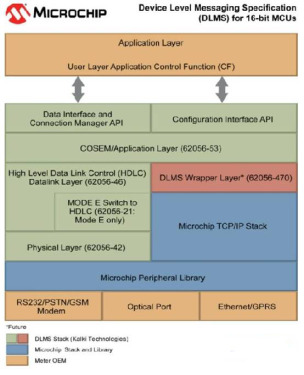The POE splitter is opposite to the POE power supply. POE power supply combines data signal and power, so POE power supply is also called POE combiner. The working process of the POE splitter is just the opposite, which separates the data signal from the power. If data terminals such as network cameras (IPC), wireless APs, and IP phones support POE power supply, you do not need to use a POE splitter when wiring, and you can directly supply power via a network cable. The POE splitter is mainly used for PSE devices such as POE switches and POE power supplies at the upper end, but the devices connected to the lower end do not support POE. The POE splitter separates the power supply into data signal and power. There are two output lines, one is the power output line, and the other is the network data signal output line, that is, the ordinary network cable. The power output has 5V/9/12V, etc., which can match various DC input non-POE power receiving terminals, and supports the IEEE 802.3af/802.3at standard. The data signal output line, that is, the ordinary network cable, can be directly connected to the network port of the non-POE power receiving terminal.
The POE splitter is used in conjunction with PSE power supply equipment to supply power to network equipment such as wireless APs, wireless routers, IP cameras, and IP phones in a network environment that lacks a power cord or is far from a power outlet. In many monitoring occasions, the best location for monitoring may not be very convenient for equipment to obtain power. The emergence of POE splitters facilitates the integration of equipment that does not support POE power supply into the POE network, and the monitoring equipment does not have to sacrifice the most to take care of the distance of the socket. Optimal installation location.
Poe Splitter,Poe Isolator,Output Poe Splitter,Scodeno Poe Splitter Shenzhen Scodeno Technology Co.,Ltd , https://www.scodenonet.com Related Development Tools Microchip Technology Inc. (US Microchip Technology) announced with Kalki Communication Technologies Ltd. (Kalkitech) cooperated to launch a device language message specification (DLMS) protocol stack optimized for 16-bit PIC microcontrollers (MCUs). The DLMS protocol has become a global standard for intelligent meter designers to implement metering system interoperability; the metering system includes most energy types (electricity, gas, heat, and water) and multiple applications (civil, transmission and distribution). Numerous communication media (RS-232, RS485, PSTN, GSM, GPRS, IPv4, PPP, and PLC) and secure data access via AES 128 encryption.
Related Development Tools Microchip Technology Inc. (US Microchip Technology) announced with Kalki Communication Technologies Ltd. (Kalkitech) cooperated to launch a device language message specification (DLMS) protocol stack optimized for 16-bit PIC microcontrollers (MCUs). The DLMS protocol has become a global standard for intelligent meter designers to implement metering system interoperability; the metering system includes most energy types (electricity, gas, heat, and water) and multiple applications (civil, transmission and distribution). Numerous communication media (RS-232, RS485, PSTN, GSM, GPRS, IPv4, PPP, and PLC) and secure data access via AES 128 encryption.
This software stack has been tested and verified by the DLMS User Association and has been customized to run on all Microchip 16-bit PIC microcontrollers and dsPIC Digital Signal Controllers (DSCs), making the DLMS certification process faster and easier. In addition, the protocol stack has been developed to ensure seamless integration with Microchip's communication protocol stacks such as TCP/IP, ZigBee, and PLC, covering a wide range of smart energy applications. The optimized DLMS protocol stack occupies less storage space and can achieve the smallest and most cost-effective MCU application possible. For European applications, this protocol stack provides support for implementing the necessary IEC 62056-21 Mode E.
According to Mitch Obolsky, vice president of Microchip's Advanced Microcontroller Architecture Division, "The DLMS library not only adds Microchip's smart energy products, but also strengthens our ongoing focus on providing cost-effective and comprehensive solutions to our customers. Now customers can take advantage of Microchip's rich communication protocols. Solution combinations (such as TCP/IP, ZigBee, and PLC) create a fully integrated smart energy system."
Customers can use the Explorer 16 development board to design their DLMS solutions based on Microchip's rich industry-leading 16-bit MCU and DSC portfolio. Explorer 16 is available now, with the following configurations:
100-pin Explorer 16 Development Board (Part Number DM240001)
44-Pin Explorer 16 Development Board (Part Number DM240002)
Availability The new DLMS protocol stack is available now and offers the following four forms. The DLMS evaluation library for 16-bit MCUs is a free evaluation version of the DLMS library. Customers who want to use 16-bit MCUs to produce 5,000 smart watch sets can choose the DLMS-LITE protocol stack (part number SW500160) for 16-bit MCUs or the DLMS stack (part number SW500162) for 16-bit MCUs. Lastly, DLMS Explorer (part number SW500164) is a Windows-based? DLMS/COSEM client application.
January 27, 2024